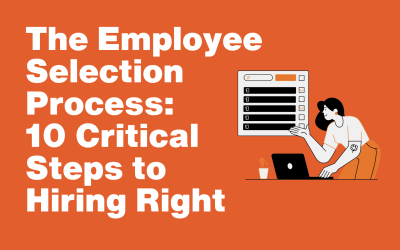Contents
Many people dream of finally having an opportunity to thrive in a leadership role.
However, when you get the executive position you’ve been dreaming of, you may find that you default into “survival” mode. When in survival mode, leaders are unable to access their true potential, because they’re simply seeking the path of least resistance. Survival mindsets are characterised by:
- Feeling stuck, or like you’re a “fraud”
- Fearing failure and allowing that fear to hold you back
- Blaming others for your circumstances
- Reacting to change rather than seeking development
- Waiting for results instead of pursuing them
Alternatively, in a thrive mindset, leaders excel. According to Martin Seligman in the book “Flourish,” thriving leaders experience positive emotions, engagement, positive relationships, meaning, and accomplishment.
So, how do you transition from “survival” into a state where you can thrive?
1. Listen and Be Engaged

Research suggests that the human brain sometimes functions in “default mode.” When your mind is in default mode, you’re typically thinking about the future or considering other things, rather than paying attention to what’s going on around you.
Unfortunately, this lack of engagement means that you miss out on essential insights and feedback from the people in your team. Leaders need to be committed to listening at work and using what they hear to make valuable changes. Remember, great leadership isn’t just about giving valuable feedback, it’s also about leveraging the knowledge of the people on the ground who are positioned to tell you how things are going and what you need to improve.
2. Learn to Delegate
One of the biggest challenges involved in taking on a leadership position is knowing how to delegate. It’s tempting to attempt to do everything yourself, but don’t forget that your team is there for a reason.
Resist the temptation to do too many things yourself and support your team members to pursue their own goals and expand their skills. The result will be a more empowered group of professionals who can better support your organisation.
3. Be Realistic

While you’re delegating and organising your own schedule, make sure that you understand the true scope of each project. Before assigning a task with the assumption that it will only take a few hours to complete, make sure that the employee you’re delegating to has the resources they need to work efficiently. A small job can become an overwhelming challenge when the correct tools aren’t in place.
Consider speaking to your staff members and finding out how long they think a specific task will take. During this conversation, you can also ask whether the employee has all the resources they’ll need. After assigning projects, ask employees to track their time, so you have a better idea of how long things take in the future.
4. Get Ready to Handle Change
When taking on a high-level position, it’s important not to jump into the deep end too quickly. There’s nothing wrong with having grand plans for what you’re going to do in your new role but making significant changes too quickly can disrupt your workforce and make it harder to accomplish your goals.
Of course, even if you don’t jump straight into transition mode, it’s likely that change will happen during your time as a leader. In fast-moving spaces like the Finance sector, changes can occur with very little notice, and you’ll need to know how to manage them. Remember that things won’t always go according to plan, and work on your problem resolution skills. Flexibility will help you to take everything in your stride.
5. Show Positive Character
A great leader needs the right attitude.
When you reach a position of power in your career, maintain your focus and remember not to let fear of failure get the best of you. It’s important to trust your instincts, but don’t forget that you can also ask for help when you need it too.
Excellent leaders are authentic, positive and forward thinking. Be ready to own up to your mistakes when they happen and show your team that you take responsibility for your actions. At the same time, don’t let the fear of making mistakes hold you back.
6. Establish and Communicate Team Goals

Finally, remember that your role as a leader is to inspire and motivate your team. A good way to do this is to make sure that you understand the goals of the company and know how to share those ambitions with your group.
Examine the core of the business carefully and think about which parts of the organisation need the most focus and investment. Once you’ve established your goals, acknowledge that different team members will be motivated in different ways. Consider speaking to each person about the rewards and recognition that would keep them feeling encouraged.
About JobFitts
JobFitts Consultants are a specialist provider of professional Recruitment Services for the Financial Services sector and related suppliers in Australia. Since 2003 we have recruited and placed a breadth of operational roles at all levels from; HR, Accounting, Marketing and Customer Service/Frontline.
To find out more visit our website at JobFitts here or call us on (02) 9220 3595 or email here.










Share This
Share this post with your friends!